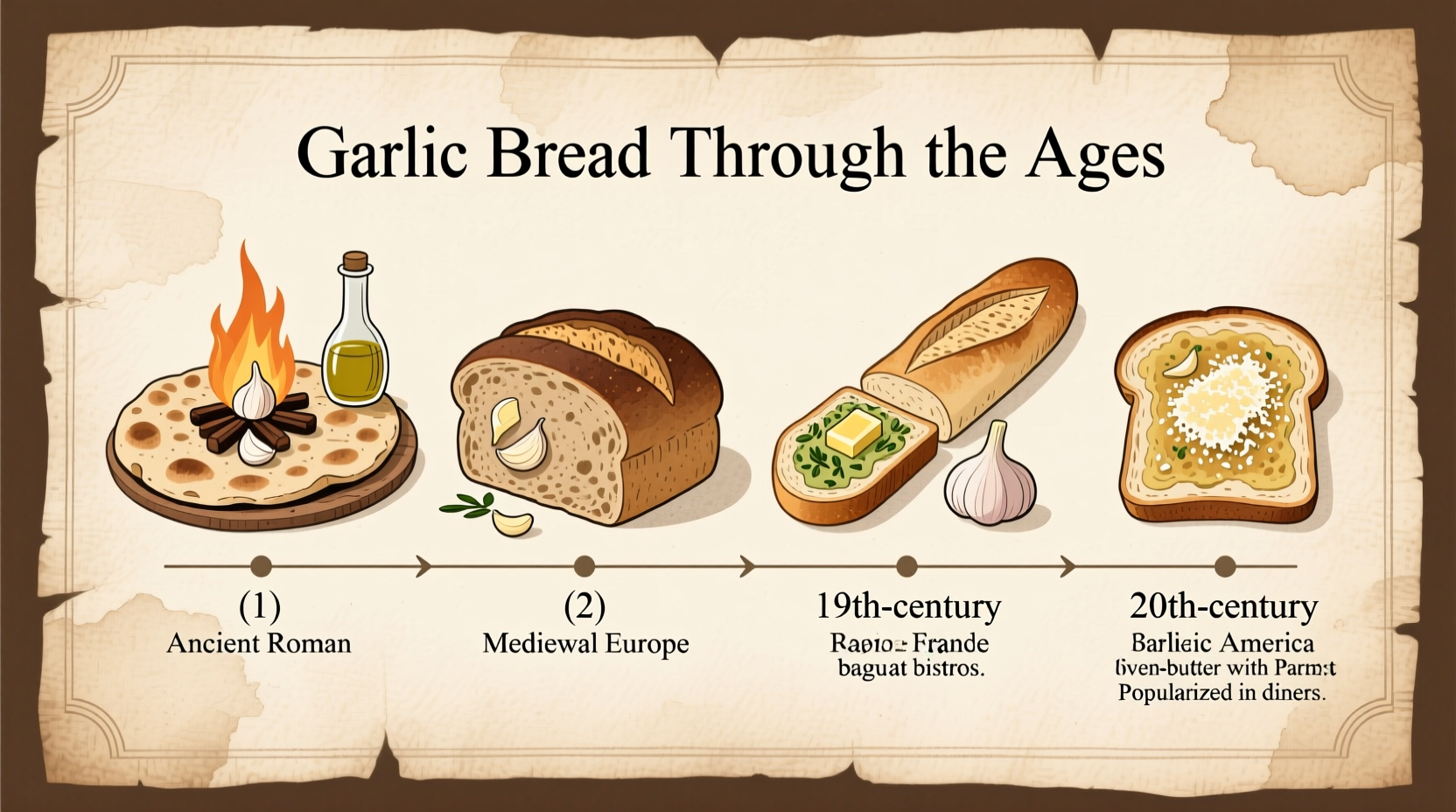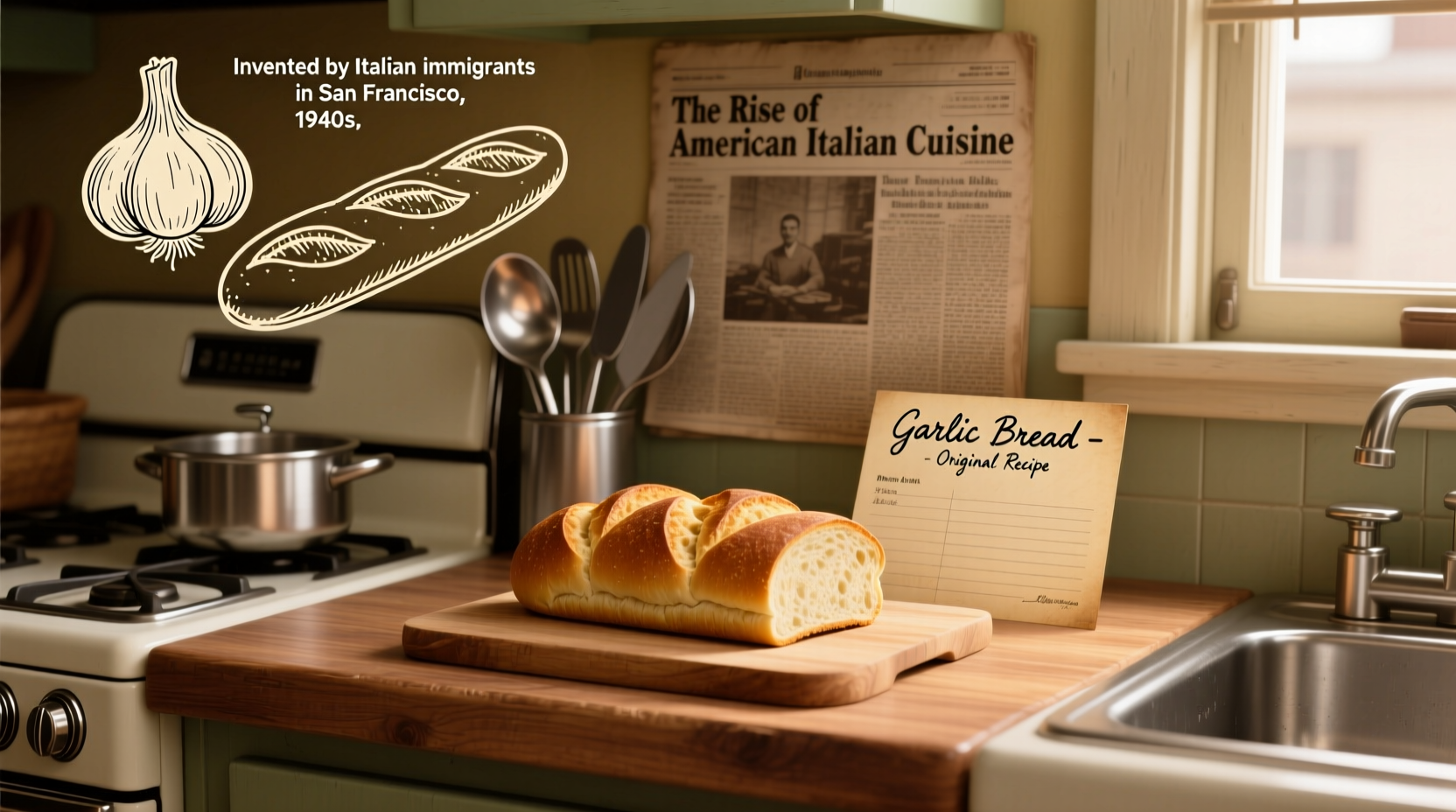Garlic bread wasn't invented by a single person—it evolved over centuries across multiple cultures. Historical evidence shows garlic rubbed on bread dates back to ancient Rome, while the modern version we recognize emerged from Italian culinary traditions in the early 20th century before gaining global popularity through Italian-American restaurants after World War II.
Ever wondered who deserves credit for that irresistible golden-brown slice of garlic bread accompanying your pasta? You're not alone. Millions search who invented garlic bread each year, hoping to uncover the culinary genius behind this beloved side dish. But the truth might surprise you—there's no single inventor. Instead, garlic bread represents centuries of culinary evolution, shaped by cultural traditions and regional adaptations that transformed a simple peasant food into a global phenomenon.
Debunking Common Garlic Bread Origin Myths
Before we explore the real history, let's address popular misconceptions. Many claim garlic bread was invented in 1940s New York or created by a specific chef named Tony in California. These stories make for great restaurant marketing but lack historical evidence. Food historians have found no documentation supporting single-inventor theories for traditional dishes like garlic bread, which typically evolve organically within communities.
Garlic and Bread: A Historical Timeline
| Era | Development | Historical Evidence |
|---|---|---|
| Ancient Rome (1st century CE) | Garlic rubbed on coarse bread | Cato the Elder's De Agri Cultura describes allium (garlic) with bread |
| Middle Ages | "Panzanella" variations in Tuscany | Florentine market records show garlic sales to bakers |
| Early 1900s | "Bruschetta" becomes standardized | First printed recipe in Pellegrino Artusi's Science in the Kitchen (1910) |
| 1940s-1950s | American "garlic bread" emerges | Earliest U.S. cookbook reference: The Italian Cookbook (1947) |
This timeline reveals garlic bread's true nature: not an invention but an evolution. Ancient Romans consumed allium (garlic) with their staple bread as documented in Cato the Elder's agricultural treatise De Agri Cultura. Italian peasants later developed bruschetta—bread toasted over open flames, rubbed with garlic, and drizzled with olive oil—as a way to soften stale bread. The version we recognize today, featuring butter, garlic, and herbs baked into sliced bread, emerged when Italian immigrants adapted their traditions using American ingredients like butter instead of olive oil.
Cultural Context: How Regional Variations Shaped Garlic Bread
Understanding who created garlic bread requires examining how different cultures interpreted this simple combination. In Italy, what Americans call "garlic bread" is actually three distinct preparations:
- Bruschetta: Rustic bread grilled and rubbed with raw garlic
- Fettunta: Similar to bruschetta but using leftover bread
- Pagnotta all'aglio: Baked bread with garlic infusion (closest to American version)
The American adaptation developed primarily in Italian-American communities after World War II. Restaurants like Old Fisherman's Grotto in Monterey (established 1950) helped popularize the buttery, herb-flecked version served in U.S. restaurants today. This evolution demonstrates how immigrant communities adapt traditional foods using available ingredients—a pattern seen across global cuisines.
Authentic Preparation vs. Modern Interpretations
When exploring the history of garlic bread invention, it's crucial to distinguish traditional methods from contemporary variations. Authentic Italian preparation follows strict principles:
- Uses day-old rustic bread (never soft sandwich bread)
- Garlic is rubbed raw onto toasted bread (not cooked into butter)
- Minimal ingredients: bread, garlic, olive oil, salt
- Served immediately to prevent sogginess
Compare this to American-style garlic bread, which typically features:
- French or Italian loaf sliced before baking
- Butter-garlic-herb mixture spread between slices
- Baked until golden and crisp
- Often includes Parmesan cheese
This distinction matters because many searches for who invented garlic bread actually seek authentic preparation methods. Understanding these differences helps home cooks recreate either traditional Italian bruschetta or classic American-style garlic bread with confidence.

Why the "Single Inventor" Myth Persists
The enduring question who invented garlic bread reflects our cultural tendency to attribute innovations to individuals rather than communities. Food historian Dr. Ken Albala notes in Food: A Culinary History that "peasant foods rarely have identifiable creators—they emerge from collective culinary practice." This explains why searches for garlic bread's inventor yield conflicting answers: different restaurants and regions have claimed credit as the dish gained popularity.
When Italian-American eateries began featuring garlic bread prominently in the 1950s, some establishments created origin stories to distinguish themselves. The San Francisco Chronicle documented several competing claims in a 1962 feature, showing how marketing narratives can overshadow historical reality. This pattern repeats across many traditional foods—from pizza to tacos—where commercial interests reshape culinary history.
Creating Authentic Garlic Bread Today
Whether you're researching garlic bread historical origins or just want to make it at home, understanding its evolution informs better preparation. For traditional Italian-style:
- Use a rustic loaf like ciabatta or pane Toscano
- Toast bread over open flame or in oven
- Rub cut garlic clove directly on warm surface
- Drizzle with high-quality olive oil
- Season with flaky sea salt
For the American version that sparked your who invented garlic bread search:
- Use French bread cut lengthwise
- Mix softened butter with minced garlic, parsley, and oregano
- Spread mixture between cut sides
- Bake at 375°F until golden (12-15 minutes)
- Sprinkle with Parmesan in last 5 minutes
Both versions honor the dish's heritage while adapting to modern kitchens—a testament to garlic bread's enduring appeal across generations and cultures.











 浙公网安备
33010002000092号
浙公网安备
33010002000092号 浙B2-20120091-4
浙B2-20120091-4